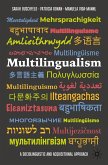This volume explores why Americans are among the least likely in the world to speak another language and how this U.S. foreign language deficit negatively impacts national and economic security, business and career prospects. Stein-Smith exposes how individuals are disadvantaged through their inability to effectively navigate the global workplace and multicultural communities, how their career options are limited by the foreign language deficit, and even how their ability to enjoy travel abroad and cultural pursuits is diminished. Through exploring the impact of the U.S. foreign language deficit, the author speaks to the stakeholders and partners in the campaign for foreign languages, offering guidance on what can and should be done to address it. She examines the next steps needed to develop specific career pathways that will meet the current and future needs of government, business, and industry, and empower foreign language learners through curriculum and career preparation.
Kathleen Stein-Smith is Associate University Librarian at Fairleigh Dickinson University - Metropolitan Campus, USA, and Chair of AATF Commission on Advocacy and member of ATA Education & Pedagogy Committee. She has taught foreign languages at high school and college level, taught adult learners, delivered TEDx talk on the U.S. foreign language deficit, and is author of 2 books and several articles.
Dieser Download kann aus rechtlichen Gründen nur mit Rechnungsadresse in A, B, BG, CY, CZ, D, DK, EW, E, FIN, F, GR, HR, H, IRL, I, LT, L, LR, M, NL, PL, P, R, S, SLO, SK ausgeliefert werden.









